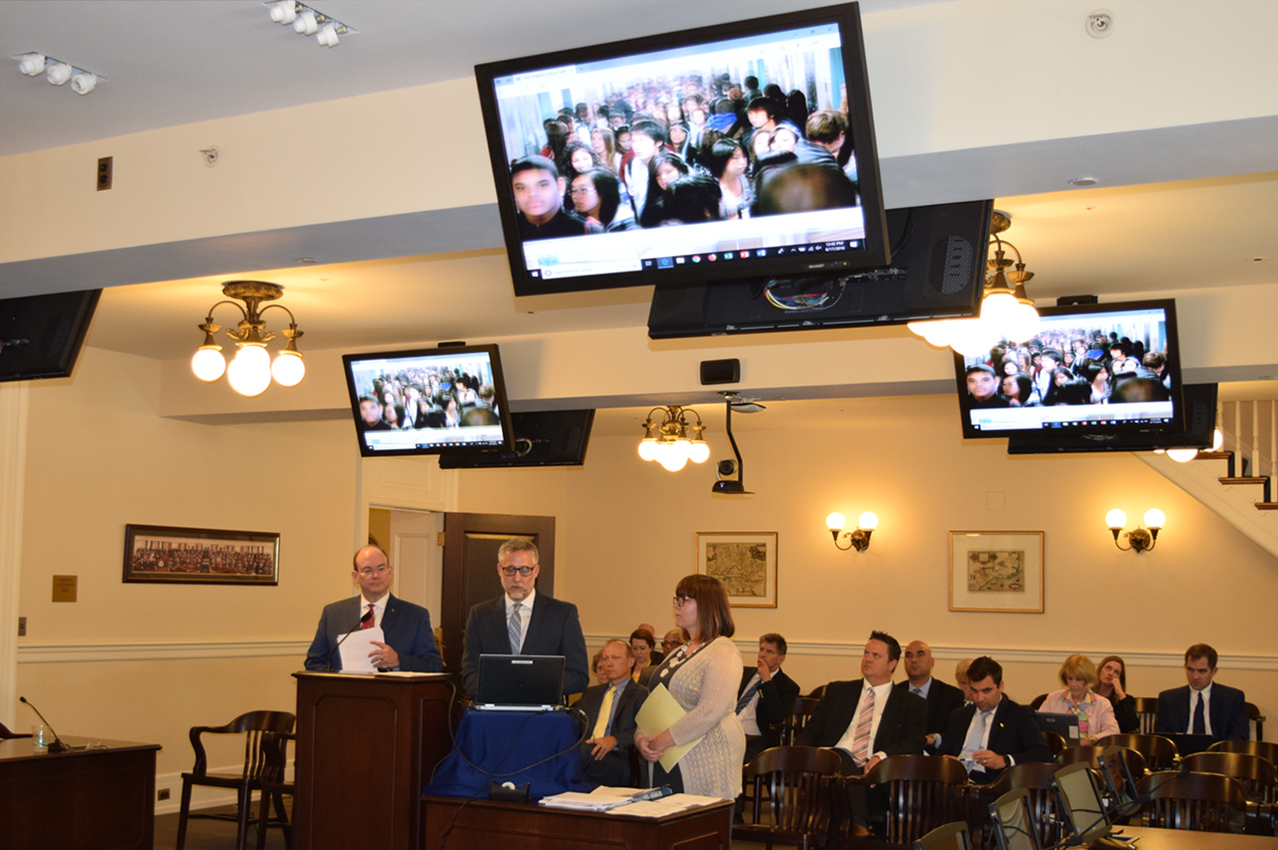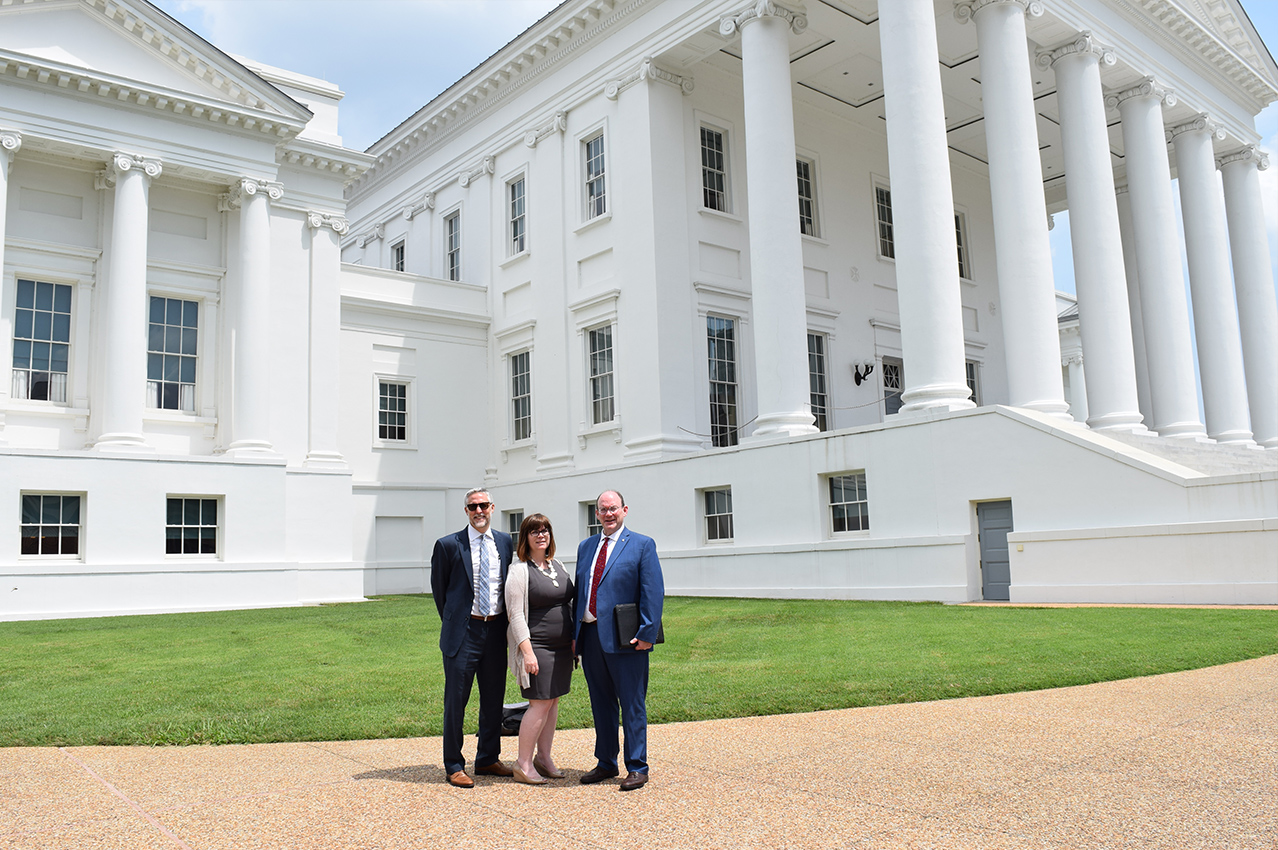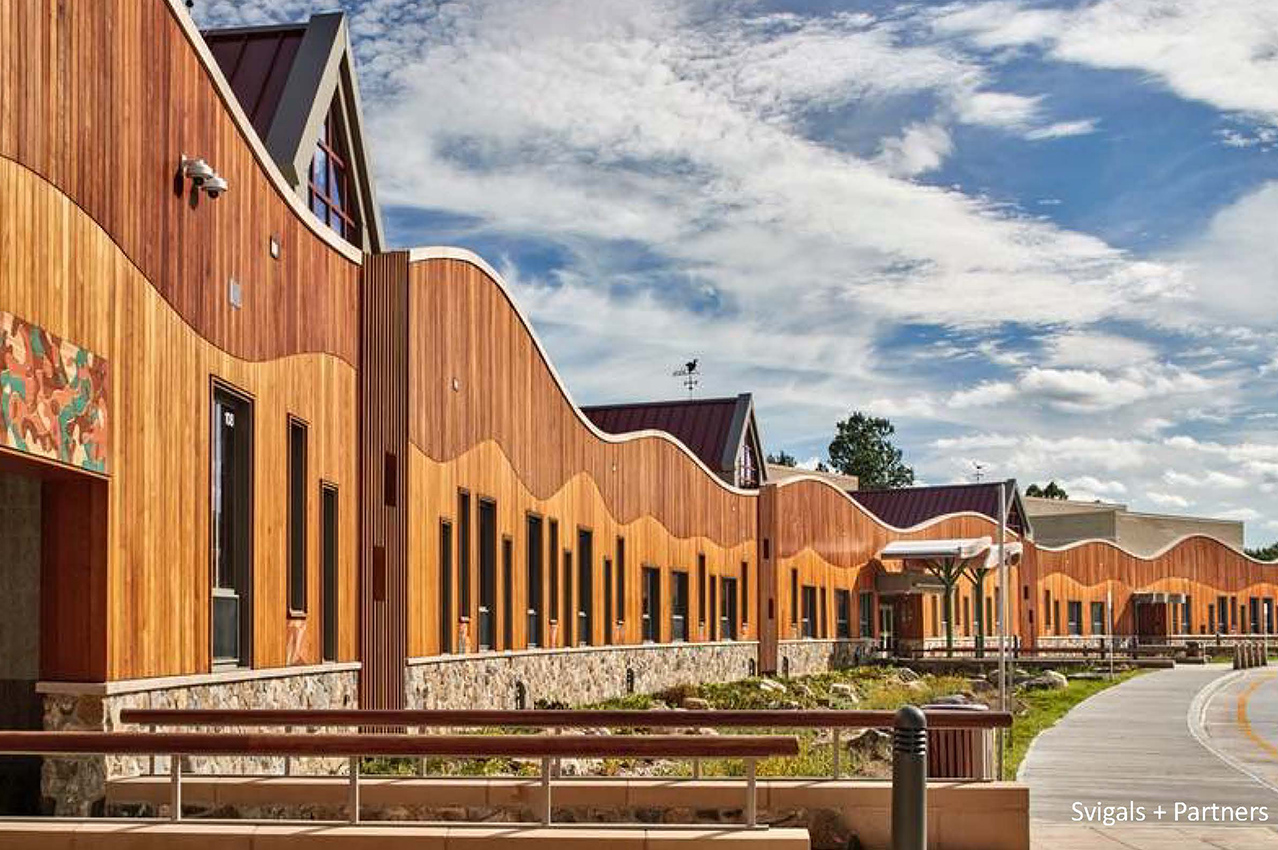For obvious reasons, school safety is a very hot topic these days. Everyone from network news programs to the New York Times to National Public Radio has something to offer. Even our local paper, The C’ville, recently devoted the entire back-to-school issue to the subject of School Safety. It’s an emotional issue, and it is increasingly challenging to make sense of the glut of information available.
As an architect focused on the design of learning environments, I was recently invited to testify before the Virginia House of Delegates. My testimony was delivered to the Infrastructure and Security Subcommittee of the Select Committee on School Safety. In light of recent school shootings, the Select Committee on School Safety was formed by House Speaker Kirk Cox, R-66th District and a former teacher, in May of 2018. This is the first select committee formed in the House in 155 years. The Committee is divided into three Subcommittees (Prevention, Mental Health, and Infrastructure and Security) that will evaluate strengthening emergency preparedness, hardening school security infrastructure, implementing security best practices, deploying additional security personnel, providing additional behavioral health resources for students, and developing prevention protocols at primary and secondary institutions across the Commonwealth.
It's rare that architects are invited to the table for this sort of discussion, and I wanted to provide a thoughtful, evidence-based perspective to the Committee. The following is an attempt to share a little of what I learned along the way.

No Simple Solutions
One important thing I learned is that there are no simple solutions. But there is a large and growing school security industry that would like us to think that they have the answers. In fact, I was the only presenter on the Subcommittee’s daily agenda that wasn’t offering a product or technological solution. While there are many options available – ballistic glass, kevlar backpacks, facial recognition software, safe rooms – there is limited evidence that these are effective in preventing school violence.
Following our testimony, the Chair of the Subcommittee asked me if I thought that prototypical school designs were a solution to providing safer schools, especially in communities that could not afford fees for architecture and engineering services. My response was simple and direct, stating that both education and school safety are complex and evolving issues, and that there is no simple one-size-fits-all solution.
Fear and Love as Motivators
Marketing professionals, politicians, pastors, and even great songwriters, like John Lennon, know it – fear and love are great motivators. These cases of recurring school violence are horrific, and people are scared. Right now, it seems that much of the rhetoric and most of the proposed solutions are motivated by fear. We are reacting to tragedy and crisis, which is deeply instinctive.
However, the chances of a child being shot in a public school is extraordinarily low. It is lower than almost any mortality risk a child faces around the school day, including traveling to and from school, deadly diseases at school, or suffering a life-threatening sports injury, according to researcher and author David Ropeik writing in the Washington Post. “We sometimes seek protection from our fears in ways that put us in greater peril,” Ropeik says about the reactions to school shootings and the power of fear. For Ropeik and many other psychologists and cognitive scientists, there must be rational introspection by decision-makers to provide a balanced approach to help counteract the tsunami of disproportionate fear that is produced by such intense, tragic, and statistically rare deadly violence in our schools.
If we respond solely out of fear, we risk creating fortress-like schools that isolate students and teach fear. If we work to understand the larger forces at work and balance that fear with love, we can provide a broader support structure that provides both physical safety and the psychological security children need to meet their full potential.
“There are two basic motivating forces: fear and love. When we are afraid, we pull back from life. When we are in love, we open to all that life has to offer with passion, excitement, and acceptance. We need to learn to love ourselves first, in all our glory and our imperfections. If we cannot love ourselves, we cannot fully open to our ability to love others or our potential to create. Evolution and all hopes for a better world rest in the fearlessness and open-hearted vision of people who embrace life.” - John Lennon

A Balanced Approach: Simultaneous Hardening and Softening
I spent a good bit of my time in front of the Subcommittee sharing the story of the replacement of Sandy Hook Elementary School. Following that horrible tragedy, Sandy Hook had every reason to create a fortress school. But they didn’t. Instead, they dug deep into the research and worked with Svigals + Partners to create a beautiful school focused on the needs of children. There are plenty of passive and active security strategies included in this project. But they are subtly and very smartly integrated into the design in a way that is invisible to most users. The overwhelming response to the design is “what a wonderful place to learn and grow!”
As an architect who appreciates the impact that design and the built environment can have on social interactions and collaborative learning, as well as social and emotional well-being, I believe that a balanced approach is necessary for secure schools and a secure future. For every dollar spent on target hardening, there should be equal or greater spending on anti-violence programs, student social and emotional support, and programs that help to improve the social fabric in and around our schools. When paired with simple, yet effective design strategies that facilitate feelings of connection to a place or community, a school’s configuration, by design, can help combat feelings of isolation and exclusion while providing tangible solutions that create safer patterns of egress, circulation, and surveillance. While buildings cannot prevent violence, they can – through a balance of physical and programmatic hardening and softening strategies – responsibly contribute to a sense of belonging, identity, and psychological security within a larger culture.
Beyond good design theories and practices, it takes a holistic mix of industries and services – bolstered by awareness, advocacy, and investment – to advance commitments to mental health services and school resources. The Virginia House Subcommittee is taking important steps in their calls for increased funding for new staff, school psychologists, and more social workers in schools. By listening to a wide array of voices and experts – including architects – the Virginia House Subcommittee is leading a path of bipartisan support to help make schools safer with better learning environments that support the holistic well-being of students and staff.
Hopes for the Future
The following are a few key take-aways from our testimony:
- Fear is NOT conducive to learning
- Thoughtful design is critical to school security (physical and psychological
- There should be one way in and many ways out
- A mix of passive and active observation
- Community and culture are key
- Funding is critical (systems, training, staff, and programs)
These ideas will help shape the way that I approach school security, but there is much more work to be done. I am still struggling to make sense of all this information. The truth is, this kind of violence against others doesn’t really make sense. Further, there’s little that architecture and design can do if someone is truly intent on harming others. The best that we can do is use available evidence to make informed decisions about caring for our students.
Schools hold precious cargo, and yes, we can and must do more to keep students safe. But we must also remember that school-age children are particularly aware of their surroundings, and that the spaces we design for them send subtle but powerful messages about how we feel about them and their future. We must provide the sense of belonging and connection critical to the development of caring, engaged, and responsible citizens. Our safety depends on it.
Additional Resources
- Rob Winstead's Presentation Slides to VA House Committee on School Safety on Aug 17, 2018.
- Virginia Youth Violence Project (Dewey Cornell, Director)
- School Violence Myths
- Call for Action to Prevent Gun Violence in the United States of America
- The Virginia Department of Criminal Justice Services Virginia School Safety Audit ProgramSchool Safety Audit Program
- School Design Safety Resources
- Jay Brotman, designer of the building that replaced Sandy Hook Elementary School, recently testified on behalf of the American Institute of Architects (AIA) in front of the US Department of Education.

